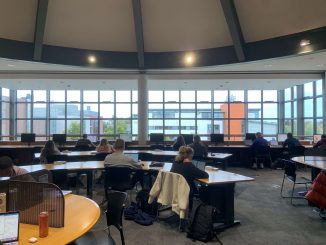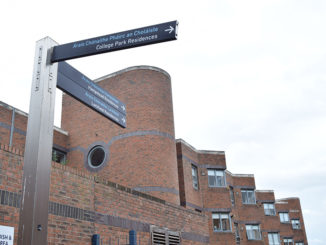
Dublin’s Number 11 bus route is headed toward extinction. As part of the BusConnects changes, its replacement – Number 19 – will end service at Parnell Square rather than crossing south through the city. This change is expected in early December, and has raised concerns for many. The new plan is especially worrisome for a sizable group of DCU students who rely on this route to commute safely to and from university.
For years, DCU students and southside residents have depended on the Number 11 bus to avoid walking through the city centre at night. Many students rely on this bus route as a safe, direct way to head south after late lectures, and steer clear of any potential risks that accompany walking at night in the city. Now, with the route change, students will face a much different commute, and will have to travel through dark areas of Dublin after 6 p.m. This poses an increased safety risk, which is particularly concerning for female commuters.
In addition, last November’s riots in Dublin left a lasting impact on many of the city’s residents, notably immigrants with permanent residence in Ireland who may now feel apprehensive traveling near potential protest zones.
The Number 11 has served to offer a secure way home, transporting passengers to much less precarious spots outside of the city centre – such as the Ranelagh and Stillorgan Luas stops – where they can safely transfer.
Beyond safety, this change threatens to create greater congestion in an already busy area. Many buses presently terminate at Parnell Square and O’Connell Street, and adding another route here would likely increase traffic at peak times. This would impact both pedestrian and vehicle safety. The cut also stands to overburden the area as the new route is expected to include a stop at Dublin Airport, raising further concerns about overcrowding.
The impact extends beyond current students commuting to and from DCU. The Number 11 provides vital access to DCU’s facilities, particularly during events like open days, when prospective students visit campus. Limited parking means the bus is often the primary way for visitors to reach the university, and eliminating this route could reduce the accessibility of DCU to students across Dublin, affecting their ability to evaluate if the university is the right fit for them.
Additionally, community events held on campus, such as the Emmanuel concerts at The Helix, depend on the Number 11 route. Schools from the southside rely on this bus to bring their students to these events. Without the Number 11, attendance could be cut in half, as alternatives would require navigating a more complicated and time-consuming journey through the city centre.
Signs and petitions with “Save the 11” have begun appearing along the route. To prevent this change from going forward, residents and students alike are encouraged to sign the petition and voice their concerns. Preserving the Number 11 is about more than just a bus; it’s about ensuring safe, reliable transportation for both DCU students and for other affected communities across Dublin.



